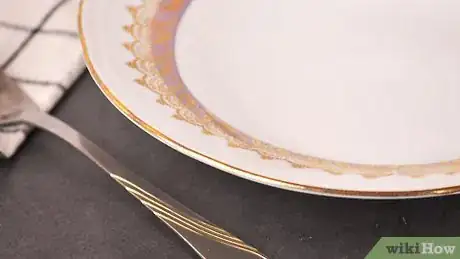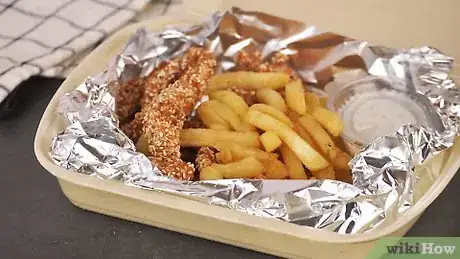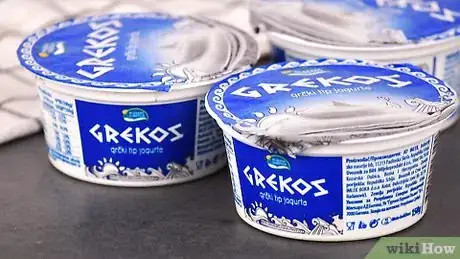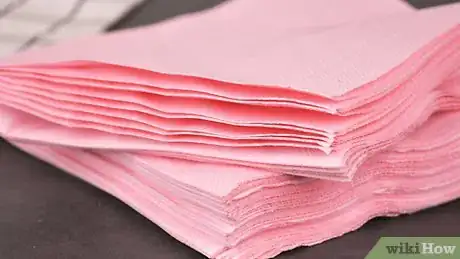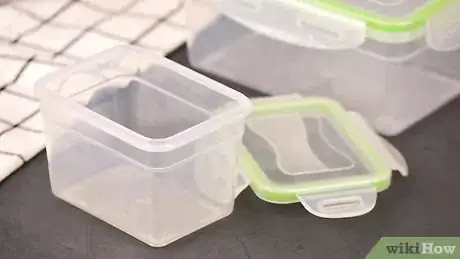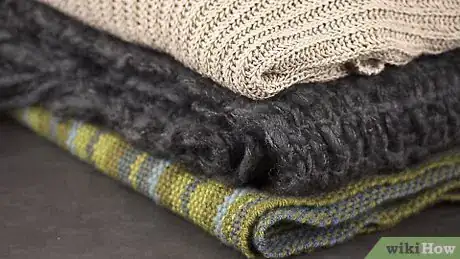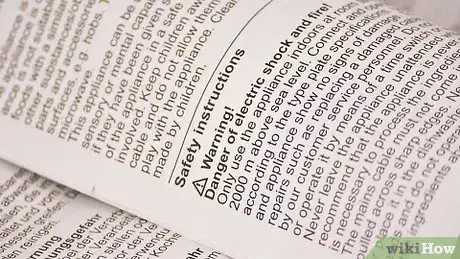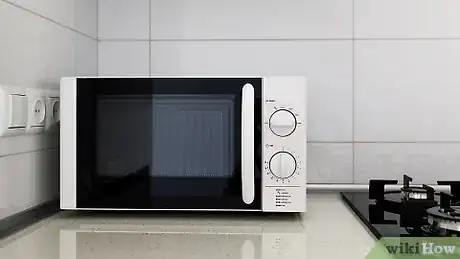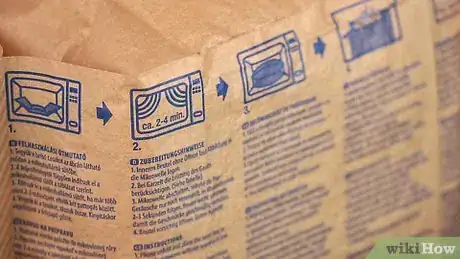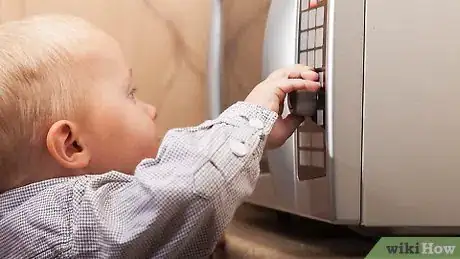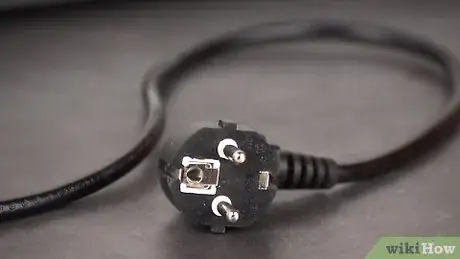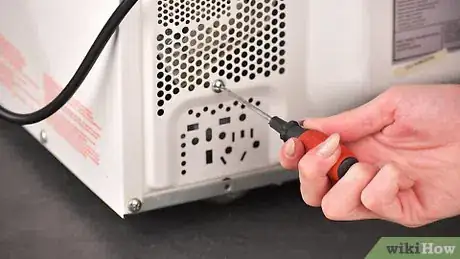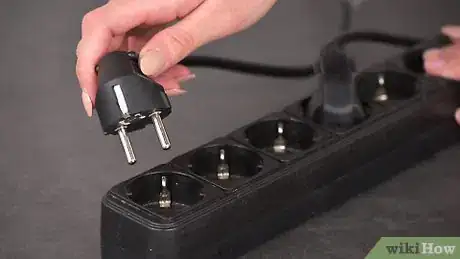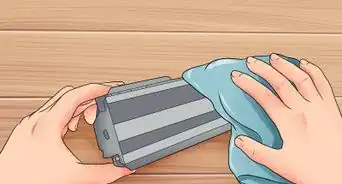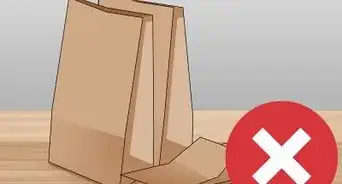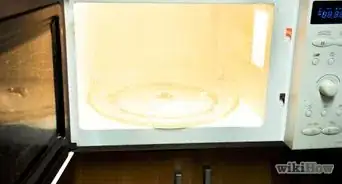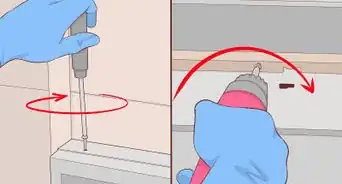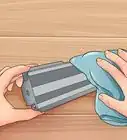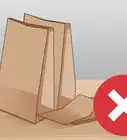wikiHow is a “wiki,” similar to Wikipedia, which means that many of our articles are co-written by multiple authors. To create this article, 17 people, some anonymous, worked to edit and improve it over time.
There are 7 references cited in this article, which can be found at the bottom of the page.
The wikiHow Video Team also followed the article's instructions and verified that they work.
This article has been viewed 78,190 times.
Learn more...
Microwaves are a quick, convenient way to heat up your food or make quick meals. However, if not careful, microwaves can pose a fire hazard. While avoiding microwave fires is often as simple as not putting certain materials in your microwave, you should also take some basic safety precautions like not leaving your microwave unattended. Thankfully, you don't need to go to great lengths to prevent microwave fires!
Steps
Avoiding Known Fire-Starters
-
1Don't put metal in your microwave. Any kind of metal will spark in a microwave, which can cause a fire very quickly. Metal objects that should not go in the microwave include, but are not limited to:[1]
- Pots and pans
- Silverware
- Plates, bowls, or cups with metal or metal trims
- Metal cans
- Takeout containers with metal handles
-
2Avoid microwaving aluminum foil. Aluminum foil is a type of metal, so it's not safe to put in your microwave. If your food is wrapped in aluminum foil, unwrap it and put it on a plate before putting it in the microwave.[2]Advertisement
-
3Only put microwave-safe plastic into your microwave. Styrofoam, regular plastic wrap, and some plastic containers will heat up and melt in the microwave, which can start a fire (and transfer chemicals into your food).[3] Check if the plastic is microwave-safe before putting it in the microwave; if it's not, transfer it to another container.
-
4Be cautious with paper products. Some paper products can go in a microwave; others will start a fire. Like with plastics, check if they're microwave-safe before putting them in the microwave.[6]
- Things like wax paper, parchment paper, and paper towels are safe if they're specifically labeled as microwave-safe.[7]
- Recycled paper can be dangerous, because it can have very small pieces of metal in the paper. Always make sure the product is microwave-safe beforehand.[8]
- Plain brown paper bags are not microwave-safe and will catch fire.
- Cardboard is also unsafe to microwave.[9]
-
5Check if food or drink containers are microwave-safe. Not every container can be safely microwaved. While glass and ceramic containers are not as much of a risk (since they don't burn or catch fire easily), plastic containers can melt and catch fire.[10] If you're not sure if something is microwave-safe, check the bottom of the container; microwave-safe containers will be labeled as such.
- This applies to Tupperware, travel mugs, and any dish coverings you might use.
- Metal or aluminum containers are not safe to put in your microwave.
-
6Don't microwave grapes or chili peppers. While this might seem odd, grapes and chili peppers will actually catch fire in the microwave. Grapes, when touching each other, will spark in the microwave and could start a fire. And chili peppers contain capsaicin, which is flammable when microwaved - and capsaicin also becomes airborne, meaning you'll get a spicy spray to the face when you open the microwave.[11]
-
7Avoid putting non-food objects in your microwave. While it might seem obvious, things like clothes, phones, dry sponges, and matches are not meant to be put in a microwave. These can damage your microwave and could potentially start a fire.[12] If you're not sure whether something can safely go in your microwave, don't microwave it.
- There are some non-food objects that can be safely microwaved if you know what you're doing, like CDs, but these can still damage your microwave. Only microwave non-food objects if you know how to do it safely.
-
8Never use the microwave when there's no food inside. If you run the microwave with nothing inside it, there's no food to absorb the energy, so the microwave is absorbing its own energy. While some microwaves are built to better withstand this, other microwaves can be severely damaged by this, and can catch fire.[13]
- If you want to set a timer, look for the Timer option on your microwave, or use a physical timer (or your phone).
Practicing Safety Strategies
-
1Read the manufacturer's guide. The manufacturer's guide of included with your microwave can give you more information on microwave safety and what you should and shouldn't do with that specific microwave.[14]
-
2Keep the area around the microwave clear. If the vents are blocked, it will trap heat, and a fire could start. Make sure there are no objects near or up against the microwave, and don't place things on top of the microwave.
-
3Never leave the microwave unattended. This is especially important if you're heating up meals that take longer than three minutes. The longer the food cooks, the more likely it is to burn or catch fire.[15]
-
4Check the directions when microwaving foods. If you're heating up a microwave meal or popcorn, check the packaging before you put it in the microwave. You don't want to set the food on fire by leaving it in for too long, and some microwave meals need part of the packaging removed. Directions are usually placed on the box or the packaging of the food itself.
-
5Keep young children away from the microwave. Young children can turn on the microwave for a long time, or unknowingly put dangerous things into a microwave. If you live with children, explain to them that they should not use the microwave unless an adult is there to supervise them.[16]
- Elementary-aged and older children can typically be taught how to safely use the microwave.
- If possible, place the microwave higher up so young children are unable to reach it.
-
6Refrain from using the microwave if the power cords are damaged. If something is wrong with your microwave's power cord or the outlet it's plugged into, it could spark and cause a fire. Be sure all power cords and plugs are functioning properly and that the cord is intact.[17]
-
7Don't try to fix a broken microwave yourself. Microwaves have multiple electrical components that can be easily damaged if you don't know what you're doing. If you try to fix a broken microwave and damage something in the process, the microwave could catch fire when it's next used.[18]
-
8Know how to react if your microwave does catch on fire. If something goes wrong, and your microwave catches fire, it's important to stay calm. Shut off the microwave and/or unplug it immediately, and do not open the door. Most fires will die out on their own once the microwave is off.[19]
- Do not open the microwave if there's a fire. Opening the door will give it oxygen and will make the fire worse. Wait until the fire dies out.
- If the fire doesn't stop or starts to spread, leave your house and call emergency services.
Community Q&A
-
QuestionDoes tin foil blow up in the microwave?
 Community AnswerTin foil will catch your microwave on fire.
Community AnswerTin foil will catch your microwave on fire. -
QuestionCan heating aluminum cause a fire in the microwave?
 Community AnswerIt can. There are some circumstances where aluminum foil or an aluminum pan can be used to heat something in a microwave: the foil needs to be smooth and non-wrinkled, should be at least one inch away from the oven walls, and should not cover all of the food. If the microwave has metal shelves or a metal turntable, do not use an aluminum container. If you see sparks, immediately turn off the microwave and transfer the food to a microwave-safe dish.
Community AnswerIt can. There are some circumstances where aluminum foil or an aluminum pan can be used to heat something in a microwave: the foil needs to be smooth and non-wrinkled, should be at least one inch away from the oven walls, and should not cover all of the food. If the microwave has metal shelves or a metal turntable, do not use an aluminum container. If you see sparks, immediately turn off the microwave and transfer the food to a microwave-safe dish. -
QuestionCan I put an item in the microwave if it contains 87.5 percent cotton and 12.5 polypropylene?
 MicheleTop AnswererMany plastic containers contain polypropylene, and while generally considered microwaveable, you should check with the manufacturer before placing in a microwave. It would seem that you're talking about batting for a microwave bowl or heating pad. This type of combination should never be left in the microwave for more than 3 minutes at a time. Don't use 100% cotton, though, which can catch fire in the microwave. Your combination of cotton and "scrim" is fine, so long as it's not microwaved for too long.
MicheleTop AnswererMany plastic containers contain polypropylene, and while generally considered microwaveable, you should check with the manufacturer before placing in a microwave. It would seem that you're talking about batting for a microwave bowl or heating pad. This type of combination should never be left in the microwave for more than 3 minutes at a time. Don't use 100% cotton, though, which can catch fire in the microwave. Your combination of cotton and "scrim" is fine, so long as it's not microwaved for too long.
References
- ↑ https://www.fda.gov/consumers/consumer-updates/5-tips-using-your-microwave-oven-safely
- ↑ https://www.fsis.usda.gov/wps/portal/fsis/topics/food-safety-education/get-answers/food-safety-fact-sheets/appliances-and-thermometers/cooking-safely-in-the-microwave/cooking-safely-in-the-microwave-oven
- ↑ https://www.health.harvard.edu/healthy-eating/microwaving-food-in-plastic-dangerous-or-not
- ↑ https://www.fsis.usda.gov/wps/portal/fsis/topics/food-safety-education/get-answers/food-safety-fact-sheets/appliances-and-thermometers/cooking-safely-in-the-microwave/cooking-safely-in-the-microwave-oven
- ↑ https://www.fsis.usda.gov/wps/portal/fsis/topics/food-safety-education/get-answers/food-safety-fact-sheets/appliances-and-thermometers/cooking-safely-in-the-microwave/cooking-safely-in-the-microwave-oven
- ↑ https://www.ors.od.nih.gov/News/Pages/Using_Microwave_Ovens.aspx
- ↑ https://www.fsis.usda.gov/wps/portal/fsis/topics/food-safety-education/get-answers/food-safety-fact-sheets/appliances-and-thermometers/cooking-safely-in-the-microwave/cooking-safely-in-the-microwave-oven
- ↑ https://www.ors.od.nih.gov/News/Pages/Using_Microwave_Ovens.aspx
- ↑ https://www.thoughtco.com/things-you-should-not-microwave-607458
- ↑ https://www.fsis.usda.gov/wps/portal/fsis/topics/food-safety-education/get-answers/food-safety-fact-sheets/appliances-and-thermometers/cooking-safely-in-the-microwave/cooking-safely-in-the-microwave-oven
- ↑ https://www.thoughtco.com/things-you-should-not-microwave-607458
- ↑ https://www.ors.od.nih.gov/News/Pages/Using_Microwave_Ovens.aspx
- ↑ https://www.fda.gov/radiation-emitting-products/resources-you-radiation-emitting-products/microwave-oven-radiation
- ↑ https://www.ors.od.nih.gov/News/Pages/Using_Microwave_Ovens.aspx
- ↑ https://www.ors.od.nih.gov/News/Pages/Using_Microwave_Ovens.aspx
- ↑ https://www.ors.od.nih.gov/News/Pages/Using_Microwave_Ovens.aspx
- ↑ https://www.ors.od.nih.gov/News/Pages/Using_Microwave_Ovens.aspx
- ↑ http://www.home-wizard.com/article/microwave-safety-tips
- ↑ https://www.ors.od.nih.gov/News/Pages/Using_Microwave_Ovens.aspx
